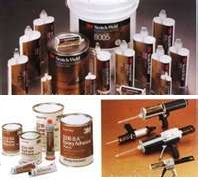Simplifying 3M Structural Adhesive Decisions
Posted on Thu, Mar 01, 2012
Narrowing down your adhesive choices can be a difficult process. In How to Decide Which 3M Product to Use we had you identifying the general characteristics of your device to identify if structural or non-structural adhesives would work better. Now that you have identified those components, and found sturctural adhesives are the right fit, you must consider three things:
• What surfaces are being bonded?
Understanding surface conditions is the first step to determine how much bonding strength will be needed and which adhesives may work best. For example, is the surface is painted and if so, with what kind of paint? /if the material is plastic, what kind? For bare metals, will the surface be clean?
• What is the preferred bonding range?
This is often the biggest clue to help understand which product will work best. Start with worklife – the amount of time you have to apply and reposition – and then ask about time spent handling strength and full cure. This could lead to productivity improvements.
• What is the joint design and how will parts fit together?
For the best adhesive bond there should be atleast a .003”-.005” gap between the parts for shear and 0.015”-0.020” for peel. The gap should be as consisten as possible.
After identifying these components your options should have narrowed from unlimited to 2, or 3 choices. Depending on formulations, 3M structural adhesives are available in a variety of cartridge sizes, 5-gallon pails, and 55-gallon drums. You can apply them manually, or with automated bulk systems. Explore your options on the 3M home page.
